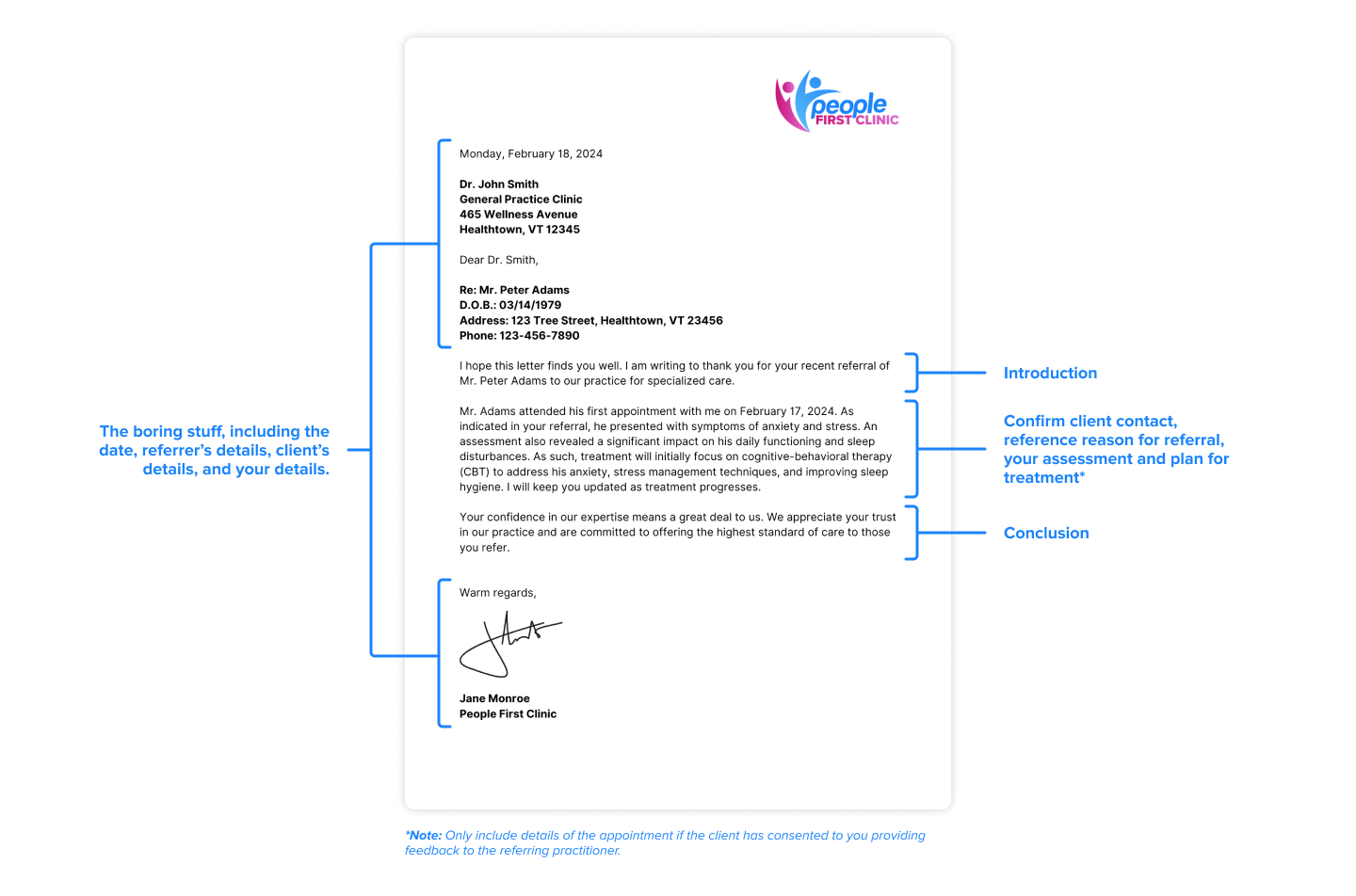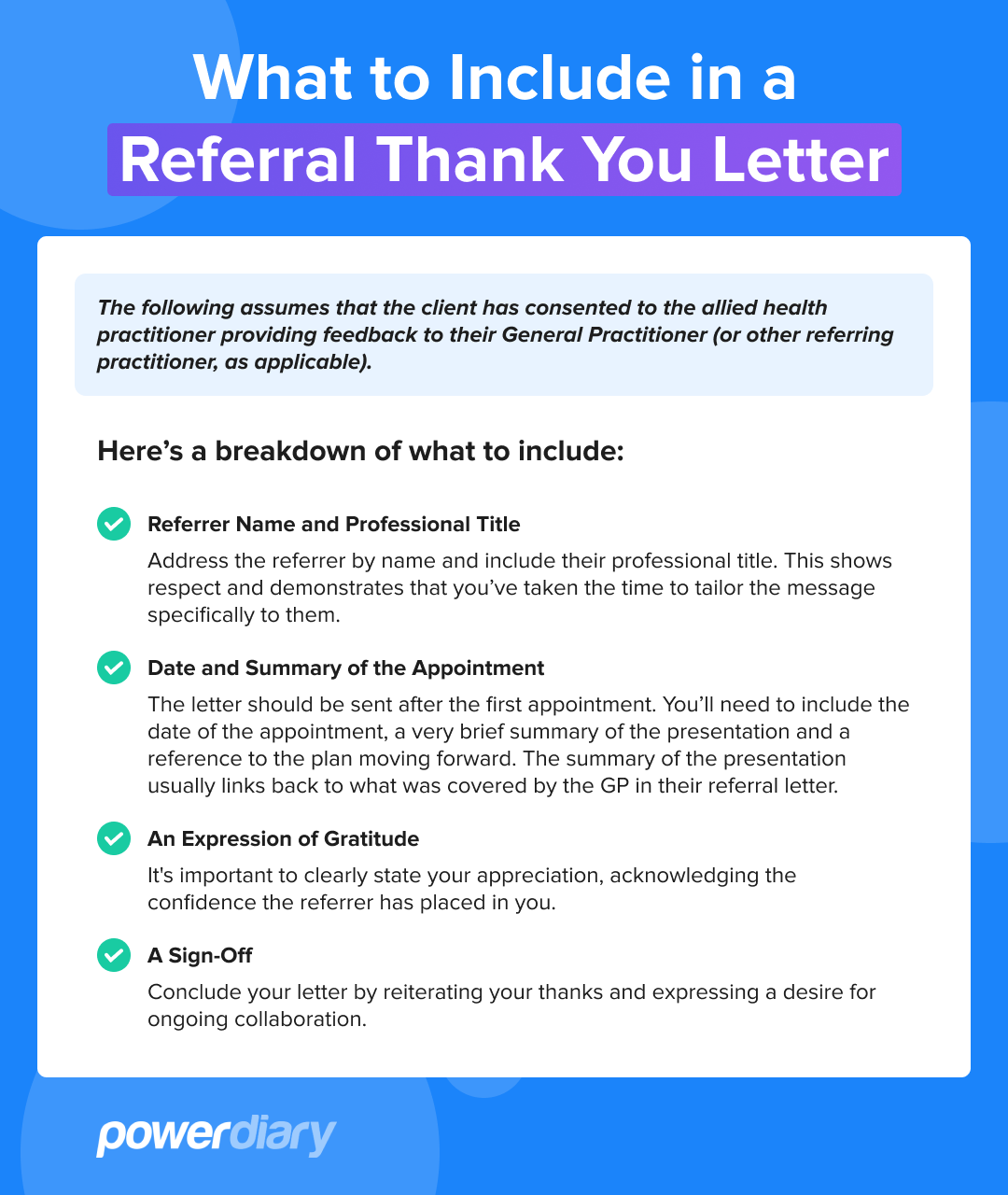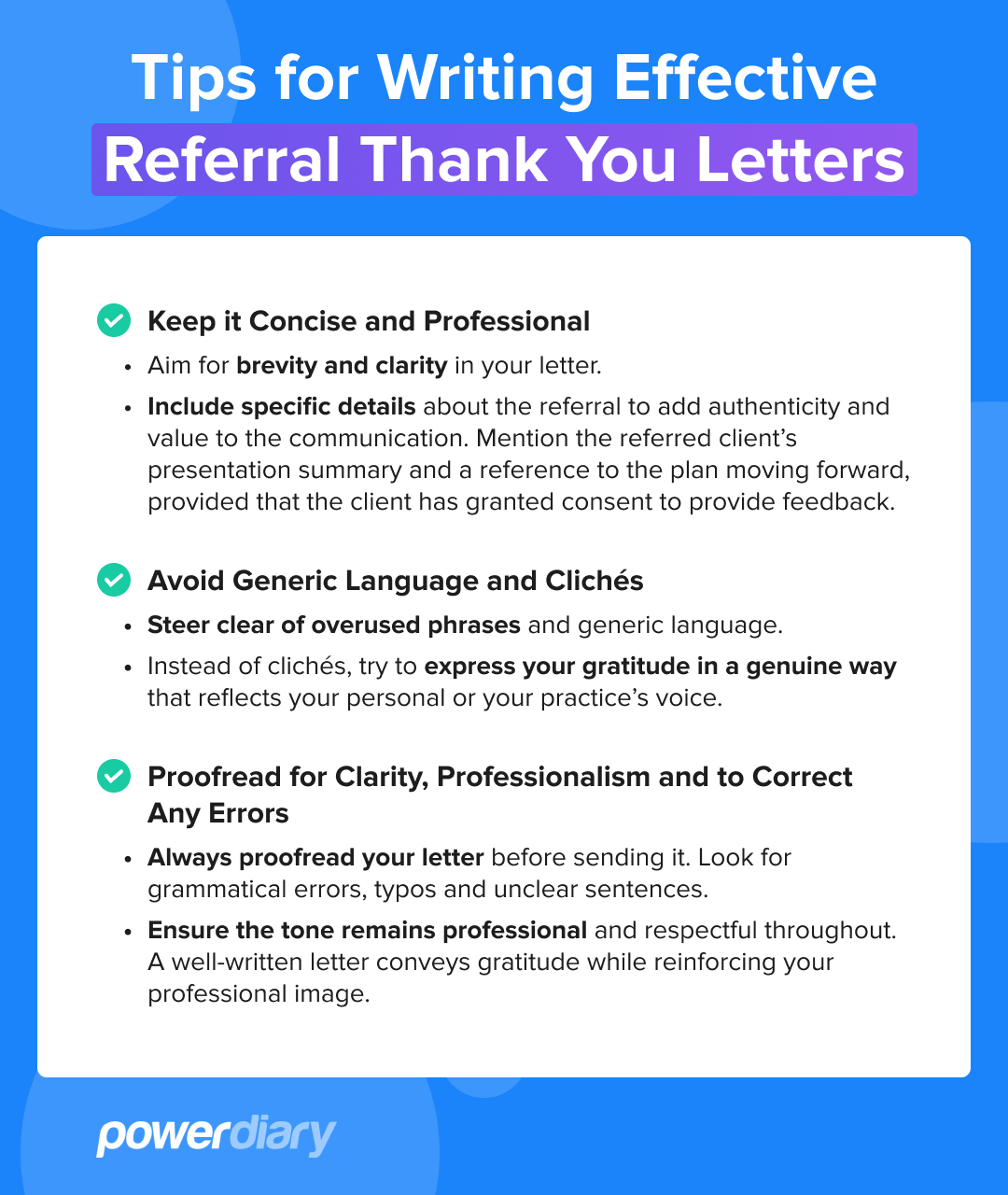In this article, we’re focusing on an element of referral relationships that’s often overlooked – the referral thank you letter.
A thank you letter in response to a referral can be a powerful tool for collaborative care. It not only ensures the referrer is up to date with their client’s status, but it also builds a mutually trusting relationship with your referral network, which usually leads to more referrals.
Let’s dive right in and explore the nuances of writing an effective referral thank you letter. We’ll cover what they are, why they matter and how to write one.
Why Referral Thank You Letters Matter
Referral thank you letters serve a dual purpose:
1. Direct acknowledgement and appreciation for the referral
A thank you letter shows the referrer you appreciate their confidence in your expertise and their decision to connect the client with your services.
2. Demonstrates collaborative care
Effective communication in a referral feedback letter provides the referring practitioner with information about the client’s status.
What’s the Difference Between a Referral Thank You Letter and a Referral Feedback Letter?
Referral Thank You Letter
The purpose of a referral thank you letter is to express gratitude for the trust shown in your services while providing a brief update on the client’s status with your practice.
- Timing and Occasion: These letters are usually sent just after the referred client’s first appointment.
- Content: A thank you letter focuses on appreciation and acknowledging the professional relationship. It contains basic information about treatment status and isn’t as detailed regarding the client’s specific treatment or outcomes.
- Tone: The tone is typically warm and professional.
Referral Feedback Letter
A referral feedback letter, in contrast, is intended to provide the referrer with updates and insights into the client’s progress or the outcomes of the treatment or service provided.
- Timing and Occasion: Feedback letters are sent after a significant treatment milestone or upon the completion of treatment.
- Content: These letters contain detailed information about the client’s treatment, their response, and plans for future treatment if applicable. They are crucial for sharing important health information, ensuring continuity of care, and facilitating further professional collaboration.
- Tone: The tone here is more informative. While gratitude may still be expressed, the primary focus is on conveying clinical information and client outcomes.
What to Include in a Referral Thank You Letter
Crafting a referral thank you letter involves several key components to ensure it effectively communicates your gratitude and maintains a professional tone.
The following assumes that the client has consented to the allied health practitioner providing feedback to their General Practitioner (or other referring practitioner, as applicable).
Here’s a breakdown of what to include:
1. Referrer Name and Professional Title
Address the referrer by name and include their professional title. This shows respect and demonstrates that you’ve taken the time to tailor the message specifically to them.
2. Date & Summary of the Appointment
The letter should be sent after the first appointment. You’ll need to include the date of the appointment and a very brief summary of the presentation. This summary usually links back to what was covered by the GP in their referral letter.
By including these details, you’ll confirm that the client initiated treatment with your practice. It also shows you’ve listened to what the referrer has said and indicates what will happen moving forward. Then, when the client goes back to the referrer, the referrer can continue the conversation with an understanding of the client’s treatment status. It all contributes to the continuity of care.
Without these details, the GP’s communication with the client will seem more disjointed.
3. An Expression of Gratitude
It’s important to clearly state your appreciation, acknowledging the confidence the referrer has placed in you. This expression of thanks reinforces the value you place on the relationship and the referral itself.
4. A Sign-Off
Conclude your letter by reiterating your thanks and expressing a desire for ongoing collaboration. A well-written conclusion leaves the recipient with a positive impression and strengthens the professional relationship.
Tips for Writing Effective Referral Thank You Letters
A compelling and genuine referral thank you letter requires a balance between professionalism and personal touch.
Here are some tips to ensure your letter effectively conveys your gratitude:
1. Keep It Concise & Professional
- Aim for brevity and clarity in your letter. It should be concise enough to respect the recipient’s time while conveying your message effectively.
- Include specific details about the referral to add authenticity and value to the communication. Mention the referred client’s presentation summary and a reference to the plan moving forward.
2. Avoid Generic Language & Clichés
- Steer clear of overused phrases and generic language. Adapt your message to reflect the unique relationship you have with the referrer and the specific nature of the referral.
- Instead of clichés, try to express your gratitude in a genuine way that reflects your personal or your practice’s voice. This sincerity makes your letter more impactful and memorable.
3. Proofread for Clarity, Professionalism, & to Correct Any Errors
- Always proofread your letter before sending it. Look for grammatical errors, typos and unclear sentences. A letter free of errors reflects your professionalism and attention to detail.
- Ensure the tone remains professional and respectful throughout. A well-written letter conveys gratitude while reinforcing your professional image.
Example Referral Thank You Letter
Let’s put that into practice. Here’s an example of a referral thank you letter you can adjust for specific needs and circumstances:

Write Professional Referral Thank You Letters with Power Diary
Power Diary includes a library of configurable communication templates, enabling the speedy creation of referral thank you letters that can be easily updated for each recipient.
You’ll save time and ensure consistency in your communications while allowing for the personal touch that’s crucial in professional relationships.
Conclusion
The essence of an effective referral thank you letter lies in the expression of sincere gratitude, a message tailored for the recipient and a professional tone. These letters are more than mere formalities; they reflect professional courtesy and reinforce strong, collaborative relationships that benefit client care. They also create sustainable business practices by building up trusting relationships with your referral network.
Power Diary simplifies the management of referral interactions, among many other administrative tasks, allowing practitioners to focus more on client care and less on paperwork.
To explore how Power Diary can transform your practice, sign up for a 14-day FREE TRIAL and set up an account–no credit card required.







